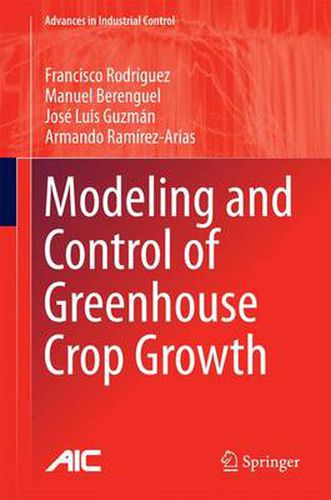Readings Newsletter
Become a Readings Member to make your shopping experience even easier.
Sign in or sign up for free!
You’re not far away from qualifying for FREE standard shipping within Australia
You’ve qualified for FREE standard shipping within Australia
The cart is loading…






This title is printed to order. This book may have been self-published. If so, we cannot guarantee the quality of the content. In the main most books will have gone through the editing process however some may not. We therefore suggest that you be aware of this before ordering this book. If in doubt check either the author or publisher’s details as we are unable to accept any returns unless they are faulty. Please contact us if you have any questions.
A discussion of challenges related to the modeling and control of greenhouse crop growth, this book presents state-of-the-art answers to those challenges. The authors model the subsystems involved in successful greenhouse control using different techniques and show how the models obtained can be exploited for simulation or control design; they suggest ideas for the development of physical and/or black-box models for this purpose.
Strategies for the control of climate- and irrigation-related variables are brought forward. The uses of PID control and feedforward compensators, both widely used in commercial tools, are summarized. The benefits of advanced control techniques-event-based, robust, and predictive control, for example-are used to improve on the performance of those basic methods.
A hierarchical control architecture is developed governed by a high-level multiobjective optimization approach rather than traditional constrained optimization and artificial intelligence techniques. Reference trajectories are found for diurnal and nocturnal temperatures (climate-related setpoints) and electrical conductivity (fertirrigation-related setpoints). The objectives are to maximize profit, fruit quality, and water-use efficiency, these being encouraged by current international rules. Illustrative practical results selected from those obtained in an industrial greenhouse during the last eight years are shown and described. The text of the book is complemented by the use of illustrations, tables and real examples which are helpful in understanding the material.
Modeling and Control of Greenhouse Crop Growth will be of interest to industrial engineers, academic researchers and graduates from agricultural, chemical, and process-control backgrounds.
$9.00 standard shipping within Australia
FREE standard shipping within Australia for orders over $100.00
Express & International shipping calculated at checkout
This title is printed to order. This book may have been self-published. If so, we cannot guarantee the quality of the content. In the main most books will have gone through the editing process however some may not. We therefore suggest that you be aware of this before ordering this book. If in doubt check either the author or publisher’s details as we are unable to accept any returns unless they are faulty. Please contact us if you have any questions.
A discussion of challenges related to the modeling and control of greenhouse crop growth, this book presents state-of-the-art answers to those challenges. The authors model the subsystems involved in successful greenhouse control using different techniques and show how the models obtained can be exploited for simulation or control design; they suggest ideas for the development of physical and/or black-box models for this purpose.
Strategies for the control of climate- and irrigation-related variables are brought forward. The uses of PID control and feedforward compensators, both widely used in commercial tools, are summarized. The benefits of advanced control techniques-event-based, robust, and predictive control, for example-are used to improve on the performance of those basic methods.
A hierarchical control architecture is developed governed by a high-level multiobjective optimization approach rather than traditional constrained optimization and artificial intelligence techniques. Reference trajectories are found for diurnal and nocturnal temperatures (climate-related setpoints) and electrical conductivity (fertirrigation-related setpoints). The objectives are to maximize profit, fruit quality, and water-use efficiency, these being encouraged by current international rules. Illustrative practical results selected from those obtained in an industrial greenhouse during the last eight years are shown and described. The text of the book is complemented by the use of illustrations, tables and real examples which are helpful in understanding the material.
Modeling and Control of Greenhouse Crop Growth will be of interest to industrial engineers, academic researchers and graduates from agricultural, chemical, and process-control backgrounds.